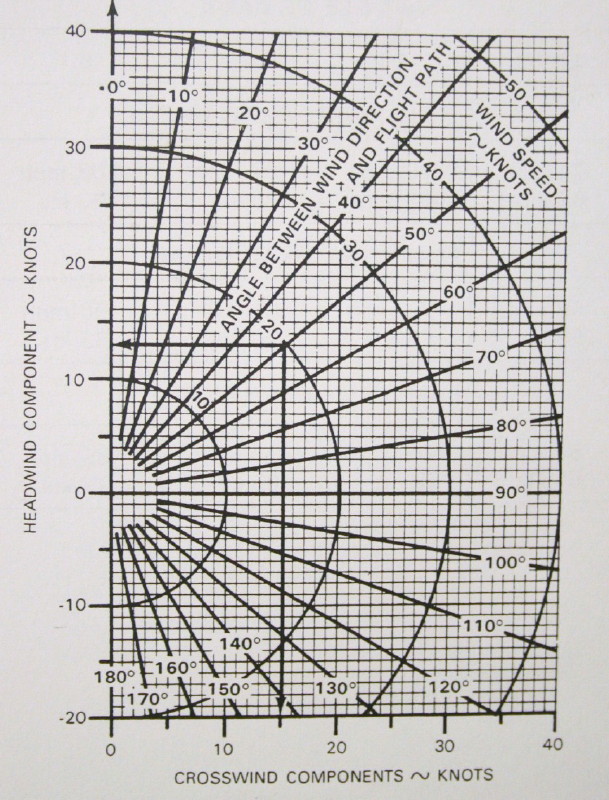The airplane is not concerned about its motion relative to the ground. Movement through the air give the wings, tail, and control surfaces the ability to do their jobs. If the airplane is stopped on the ground, facing into a 30 knots wind, the airplane will perform as if it were moving down the runway at 30 knots during a time of calm wind.
If we were to initiate a takeoff in a typical small airplane, we might need to accelerate to about 60 knots indicated airspeed prior to becoming airborne. With calm wind conditions, the airplane would have to travel 60 knots over the ground to attain 60 knots of airspeed. However, if we began the takeoff facing 30 knots of wind, then the airplane sees 30 knots of indicated airspeed prior to movement relative to the ground. With this headwind, the airplane must only accelerate to 30 knots over the ground to reach its takeoff speed of 60 knots indicated airspeed. It quickly becomes apparent that wind can dramatically change the distance required for takeoff and climbout.
On the other hand, imagine we were to begin the takeoff roll with a 30 knot wind at our back. During the takeoff roll, the airplane attains 30 knots of speed relative to the ground, but still has no indicated airspeed, zero knots. A takeoff with this 30 knot tailwind will require the airplane reach a speed of 90 knots relative to the ground in order to see its required 60 knots of airspeed. This time the takeoff roll will be many times longer with a shallow climb angle.
For landing, wind is just as important a factor in its affect on aircraft performance. Just like takeoff, landing should be made into the wind to minimize ground speed and land in a shorter distance. If an emergency landing forces you to land with the wind, expect a fast groundspeed at touchdown, and a longer landing rollout. It is also easy to overshoot your intended landing point with a tailwind, since you are crossing over the ground at a faster than expected speed. Regardless of whether you see a fast or slow groundspeed, the most important rule to remember with an engine failure is to immediately establish the proper glide attitude and airspeed.
It is important to know how much headwind or tailwind will be encountered during the takeoff and landing. However, the wind rarely aligned exactly with the runway direction. Pilots use the wind component chart to break the wind into two components. One component is the headwind component, which is the portion of the total wind velocity that is blowing straight down the runway. The other is the crosswind component, that portion of the total wind that is blowing directly across the runway.
The wind component chart shows lines which represent the angular difference between the wind direction and the takeoff direction. The circles represent the total wind speed. For example, if the wind were 30 degrees to the right or left of blowing straight down the runway at a total speed of 30 knots, the pilot would follow the 30 degree line to the 30 knot circle. From this point, the headwind and crosswind components can be read on the side and bottom of the chart. In this case, the headwind component is 25 knots, while the crosswind component is 15 knots. These wind components can now be used by the pilot to better predict airplane performance.
The crosswind component is also important to the pilot. The airplane is certified with a maximum demonstrated crosswind component. This is the highest crosswind recommended by the manufacturer for landings. Control of the airplane may be difficult with high crosswinds, especially if the runway is contaminated with rain, snow, ice, or slush. Also, it is common for flight instructors to place a crosswind limitation in the logbook of student pilots with solo privileges, until the student has more experience in crosswind conditions.
